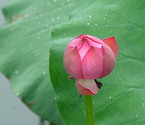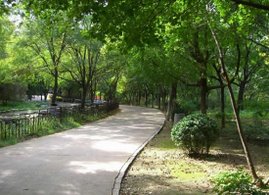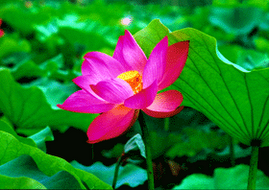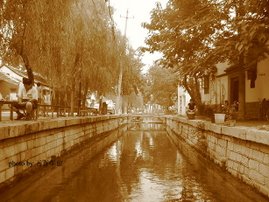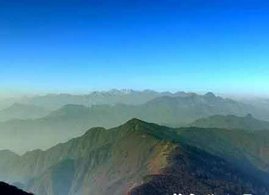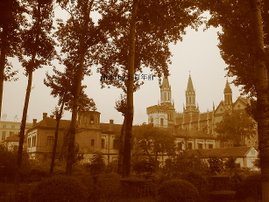Saturday, October 28, 2006
Welcome to Jinan----the City of Spring
In the following pages, I will introduce some of the most interesting places for you, the places you should not miss if you really want to know the city, and the places that will make you regret if you do not visit.
I myself have visited most of the places I recommended. I also did a lot of research on their features, stories and history behind them, their specific address and other information. Although it is extremely difficult to explain some unique things in the Chinese culture and literature, I will try my best to convey the messages of the culture.
Pay special attention to the waters and culture! I repeat myself here just want you to remember. Well, I know this may give me a low score on the SAT writing section, but I do not want you to leave without ever knowing the essence of the city!
Also, if you are not satisfied with the pictures attached here, you may go to the “My Photos” section, there you will find many brilliant wonderful incredible pictures! Some of them are taken by myself, while others are taken by friends and photographers.
Now, let’s get started, and explore!!
Baotu Spring
Tele: 86-531-86920439
Open: 7:00-21:00 (7:00-22:00 during summer time)
Buses: 5, 41, 49, K54, K96, 66, 85, 102, 103, 104, get off at Baotu Spring
Ticket fee: ¥15 at this moment, and is likely to rise to ¥40 in this December.
www.baotuquan.net
It’s a great web has lots of detailed information and wonderful pictures. Unfortunately, it has Chinese only.
Baotu Spring Garden is a park located in the center of the city with an history of over 3500 year. It is the top of the 72 famous springs of Jinan, and enjoys the fame of “the Number One Spring of the World”. The Baotu Spring is one of the “Eight Wonders of Jinan”.
The famous woman poet, LI Qingzhao, also lived in the garden. Million-bamboo Garden is also a part of Baotu Spring Park, and the architecture is really worth seeing!
Baotu Spring is not only famous for its natural wonder and beauty, but also for its rich historical background and cultural spirit. For thousands of years, poets, emperors, governors, writers, artists, calligraphers and other people all come here to praise its beauty, and many of them left their works behind.


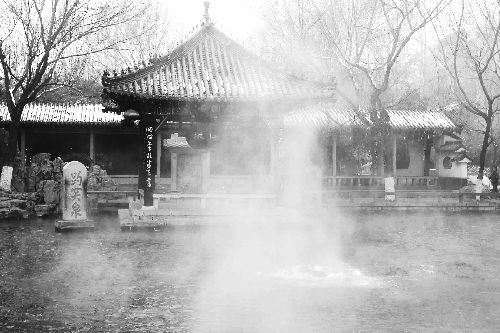

Daming Lake
Tele: 86-531-86088922
Open: 6:30-17:30 (6:30-18:30 during summer time)
Buses: 11, 41, 66, 106, K54, K96, K98, K109 Get off at Daming Lake
Ticket Fee: ¥15 at this moment, and is likely to rise to ¥40 in this December.
www.daminglake.com
“The city is surrounded by lotus all around and willows in three sides, a city full of beauty with half of it occupied by lakes”. This famous verse is exactly true for the ancient Jinan City, and the lake refers to Daming Lake. Daming Lake is about 460,000 square meters with an average depth of 2 meters. Daming Lake enjoys a long history, with many beautiful stories and legends, as well as historical relics. Many emperors, poets, artists came and left a great amount of works because of their appreciation of the lake’s natural beauty. However, the lake is not only beautiful but also rich in culture.
There are also many wonders about this lake. It is formed by the spring waters. The waters sprout from underground and gather here spontaneously. The lake was even much bigger in the history. In the years of flood, the water level did not rise, nor did it fall when the climate was dry. Also, in summer time, snakes can be seen and frogs can be heard in other places, but this is never true for Daming Lake. For thousands of years, no one has ever seen snakes nor heard the frogs sing. This enigma remains a mystery even today. There are also many incredible things about the lake waiting for you to explore by yourself!
The food here is also great. When I was in Shanghai this summer for HSYLC2006, a boy asked me where I was from. When I told him that I was from Jinan, he told me he had visited the city once and still missed the delicious portage he had on a boat on the Daming Lake. This is true for such portage is well cooked with lotus seeds and has a special aroma.
This is a place I really love, thus I recommend it enthusiastically. The lake has so many beautiful stories. The governor’s traditional Chinese mansion, the love story of Qianlong who is an emperor of the Qing Dynasty, the anecdotes of poets—all of them are fascinating and make you think of the past. The long history of humankind with many things gone yet the most brilliant part remained. Everything was gone only the natural beauty was left along.

The Heihu Springs (The Black-tiger Springs)
Open all day long.
Free of charge
Buses: 5, 36, 44, 70, 89, 91, K54, K55, 101, 14 Get off at
The Spring is opposite to the Revolution Fort. The springs sprout out from a natural cave. The water runs through the bottom of the cave, and runs out from the heads of three tigers. There are also many other springs near the Heihu Spring.
When I was young , I used to go boating along the river. This “river” was actually the fosse of the ancient Jinan City. It’s not far from Daming Lake and Baotu Spring, as it is part of the ancient Jinan and as we know, the ancient town wasn't very big.

Wulong Tan (The Five-dragon Spring)
Tele: 86-531-86924835
Open: 7:00~18:30
Ticket Fee: ¥5
Wulong Tan is located in the Wulong Tan Park. Along with 28 other famous springs, they formed the Wulong Tan Spring Group.
Wulong Tan is the deepest of all springs in Jinan.
I love this place very much, and usually go there with my younger brother. He loves the water while I always enjoy the tranquility. I usually take a book with me to read. There are also many other young people there reading and doing some study, while many old people choose to go there to do some exercise. Anyway, it’s a great place. If you live somewhere nearby, it’s a good idea to get up early and take a stroll with less than a dollar.

Zhengzhu Spring (The Pearl Spring)
Open all day.
Free of Charge
Buses: 1, 3, 101, 104. Get off at the Crown Plaza Shopping Center.
Are you fascinated by the name? The name is actually true, for the bubbles coming out of the bottom of the water look exactly like the pearls! The water then gathered and travels through the Baihua Zhou (Hundred-flower Chau), and run into Daming Lake. In the year 1466, a governor found the spring extremely beautiful, therefore he extended his garden so the spring could be part of it. There are also many scarce and old trees in the garden.
This is one of my favorite places. I usually hang out with my friends here. Especially because it is near the shopping area and big book stores, I always love to come here to enjoy the serene views after a day’s shopping.



The Red Leaf Valley
Tele: 86-531-82818666
Open: 8:00-17:00
Fee: ¥30
Bus: Take the Tour bus or No. 65, get off at The Red Leaf Valley.
Website: http://www.hongyegu.com.cn/doce/cyyl.htm
(This one is English. It’s really interesting that although the main page does have an icon accessing to the English web, the words indicating it were actually in Chinese!)
As the name suggests, the valley is famous for the red leaves. It’s located in the mountains in the southern part of the city. The best visiting time is no doubt during the Autumn.
Note: its location is a little far from the downtown, so make sure you have enough time!!




Four- Door Pagoda
Four- Door Pagoda, which is the earliest existent one story square stone pagoda with arched doors on each side. The tower
was founded in A. C.611 (in the Sui dynasty), 15.04 m in height and 7 m in width on each side. The eaves are held up with five levels. The top of the pagoda is made in 23 contracted stone boards forming a pyramid. The tope of pagoda is formed by plate, crystal of mountain and broad leaf. In the center of the pagoda is a square central pillar made of stone, with 16 triangle stone beams around it. On each of the four sides of the center stone is one stone Buddha, sitting cross-legged and facing each door.
Nine-Tip Pine grows north of the Four Gate Tower. Folks call it “head pine”. The pine is more than one thousand years old, therefore it is also called the “Thousand Year Pine”.
 Shentong Temple. First built in 351 AD, it is the earliest Buddhist temple in Shandong. It had been the center of Buddhism from East Jin to Sui and Tang Dynasties. Emerald mountain and quiet valley, clear spring water, bamboo grove, old tower and other historical relics make it a famous touring resort..
Shentong Temple. First built in 351 AD, it is the earliest Buddhist temple in Shandong. It had been the center of Buddhism from East Jin to Sui and Tang Dynasties. Emerald mountain and quiet valley, clear spring water, bamboo grove, old tower and other historical relics make it a famous touring resort.. Grave Tower Forest is situated to the east of the Four Gate Tower. Consisting of 43 towers, tt used to be the tombs for high level monks.
Dragon -Tiger Pagoda is to the south of Grave Tower Forest, facing the Four- Door Pagoda across a valley. Built in the Tang dynasty, this pagoda is famous for the fine sculptures on the body.
Nine- Pin Pagoda is located at the western foot of Vulture Mountain, south-east of Liubu. It is a brick structure 13.3 meters in height.
The Yellow River


The Following two photos were taken while I was on the airplane!
 Yellow River, the cradle of Chinese people and the birthplace of traditional Chinese culture, is the second largest river in China. It rises in Bayankela Mountain, Qinghai Province, and rolls into the Bohai Sea through Jinan, winding through 9 provinces, 300-plus cities and counties, with whole length at 5464km. The scene of the Yellow River is very spectacular, with yellow water, wide stream and rushing waves.
Yellow River, the cradle of Chinese people and the birthplace of traditional Chinese culture, is the second largest river in China. It rises in Bayankela Mountain, Qinghai Province, and rolls into the Bohai Sea through Jinan, winding through 9 provinces, 300-plus cities and counties, with whole length at 5464km. The scene of the Yellow River is very spectacular, with yellow water, wide stream and rushing waves.Spanning across the river, Jinan bridge of Yellow River is a concrete suspension bridge, updated in technology, exquisite in design and unique in appearance. The whole length of the bridge reaches 2,023m with main spanning hole reaching 220m in length.
Lingyan Temple


Situated north of Mt. Taishan, Lingyan Temple hides in the lofty ridges and towering mountains. It was first founded in the Eastern Jin Dynasty (317-420), famous in the Northern Wei Period (386-543), prosperous in the Tang (618-907), Song (960-1279), Jin (1115-1234) and Ming (1368-1644) dynasties. Lingyan Temple is known as the head of “ Four of China's Best Temples”, the other three being: Guoqing Temple in Tiantai, Zhejiang Province, Qixia Temple in Nanjing, Yuquan Temple in Jiangling.
Lingyan Temple is one of the major historical and cultural sites under state protection. Inside the temple, there are magnificent ancient buildings and profuse historical relics. Constructed against the mountain, the temple consists in 36 halls and 18 pavilions. Main cultural and historical spots include Thousand Buddha Hall with 40 Song dynasty clay statues, Pizhi Tower, Tomb Tower Forest, Huichong Tower, Jicui Zhengming Hall, Daxiong Hall, Imperial Library, carved stones and tablets through the ages.

Around the Temple are grotesque and graceful hills which constitute a secluded scenery with elegant springs and stones. You find resorts everywhere in this area, such as Lingyan best spot, Ten Miles Pine, Winding Sandalwood, Dropping Cliff, Lingpi Peak, White Cloud Cave, One Line of Sky, Langgong Stone, Kegong Bed, etc. In the Temple area, there are more than ten springs such as Sweet Spring, Zhuoxi Spring, White Crane Spring, Couple Crane Spring, Kasaya Spring, etc.
Lingyan Temple attracts countless tourists by its unique grace. Scholars and Poets through the ages climbed up and chanted poems or left calligraphy. When Emperor Qianlong of the Qing dynasty went on an imperial tour of the Southland, he stayed at Lingyan Temple eight times and left calligraphies. Wang Shizhen, the scholar of Ming dynasty chanted after touring: “Your visit to Mountain Tai is not complete if you do not come to Lingyan Temple.”
Today, new colors have been added to the old Temple. A Sino –Singapore funded aquarium and butterfly hall. Tourists can watch fish swimming in the Kasaya Spring among the sunset–bathed sights. The old-time atmosphere of Sanskrit singing with bell sounds will also come again. For your accommodation, three high standard hotels are constructed here, which provide more than 400 beds, 20 large and small meeting rooms, 5 Cara Ok dancing halls, 30 dining halls with 1000 seats, fast food bars and service shops for souvenirs. The place has become an ideal place for touring, entertainment and shopping.
Baimai Spring (Hundred-sources Spring)
Tele: 86-531-83213421
Open: 7:30-19:30
Bus: Take the tour bus. Don’t know much about the detail. Please ask the service center in your hotel.
Fee: right now it’s ¥15. during holiday it’s ¥20. The price may rise this December. Not sure yet.
Web: www.bmqgy.com
Baimai Spring is in Zhangqiu, a satellite city of Jinan, and it’s about 50 kilometers from the downtown area. It’s a nice and tranquil place.
Although Baimai Spring Park is a great place, it’s a little bit far. So if your time is not very abundant, you may decide to skip it.
I myself have never been there, so can’t say much about it. However, my brother has been there and he seems to like it!
Note: its location is a little far from the downtown, so make sure you have enough time!!

Chengzi Ya Museum
Tele: 86-531-83621031
Open: 8:00-17:00
Bus: take the long distance bus and get off at Chengzi Ya Relic.
Fee: ¥10
If you love archeology, you won’t want to miss this place! Longshan Civilization was first found here. Many treasures were discovered here, including the tools made in the Neolithic era. For example, the Black Pottery, which is also called the Egg Shell Pottery, it’s famous for its thinness. Such technology can be no longer found. Many people are trying to recover it, but not so successful.
Note: its location is a little far from the downtown, so make sure you have enough time!!

Luozhuang Han Tomb (The Tomb of Han Dynasty)
Free of Charge
It’s the top ten archeology discoveries of 2000 of China. It is the tomb of Han Dynasty, and the things discovered are of great value.
I have never been there my self, so can’t give you any more detailed information. But, if you love archeology, I strongly recommend you pay a visit.
Note: its location is a little far from the downtown, so make sure you have enough time!!


The Qi Great Wall
Tele: 86-531-87380258
Open: 6:00-18:00
Fee: ¥25
Bus: You may take a bus at Dikou Road Long-distance Bus Station at 8:30 or 15:40. There are special tour buses.
Located in the beautiful mountains, the Qi Great Wall was built 2500 years ago and older than the well known Great Wall in Beijing! There are also many other historical sites, such as the Military defense built in Qi Dynasty, the relics of the Anti-Japanese War, and the Daoism Temple.
Note: its location is a little far from the downtown, so make sure you have enough time!!

The Forest Park of the Panlong Mountain
Tele: 86-531-88787777
Open: 7:00-18:00
Fee: ¥36
Bus: Take Bus No 4 and get off at the terminal.
The forest park is located in the mountains, and here you will see many kinds of plants, birds and other animals. If you are a botanist or plants lover, you don’t want to miss this place!
Note: its location is a little far from the downtown, so make sure you have enough time!!














